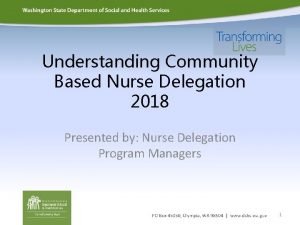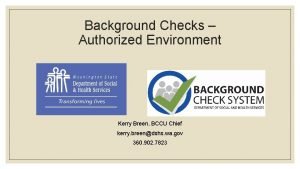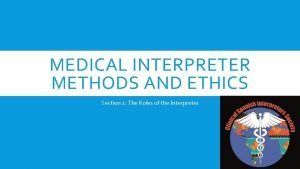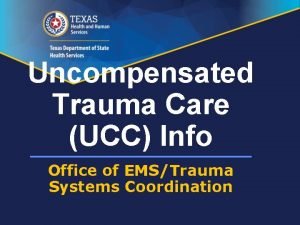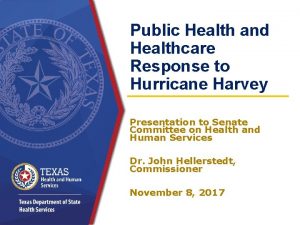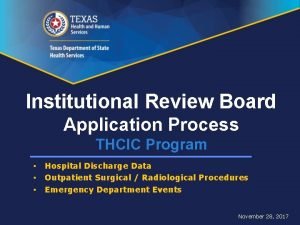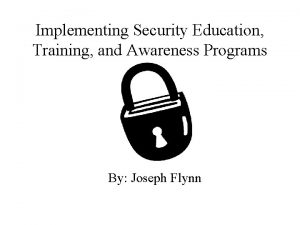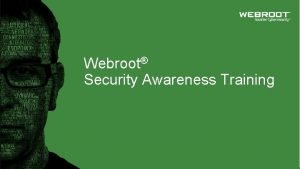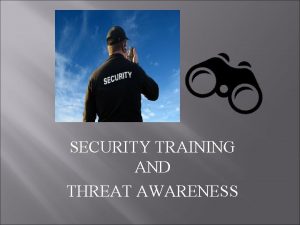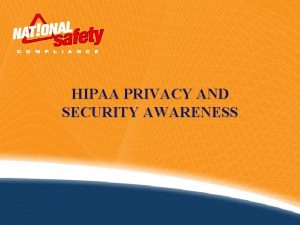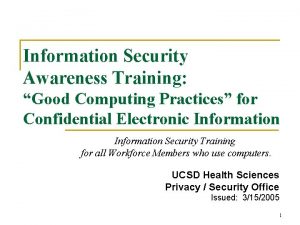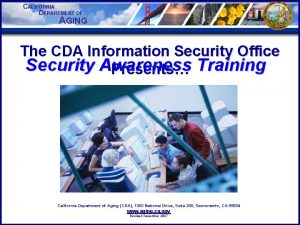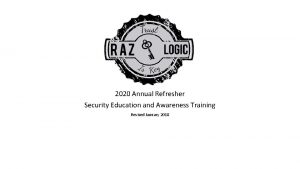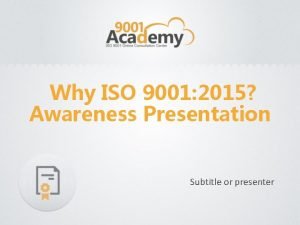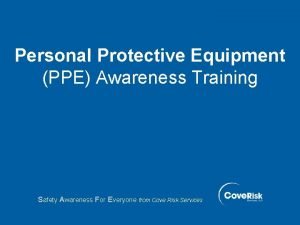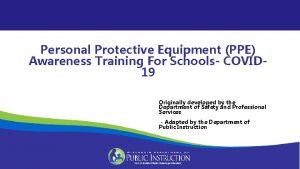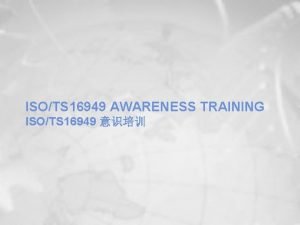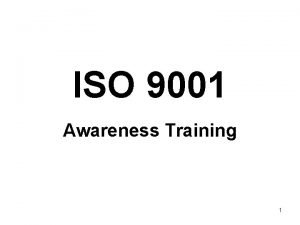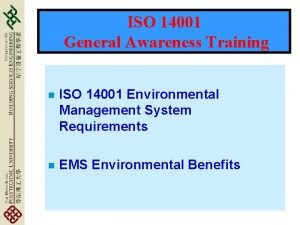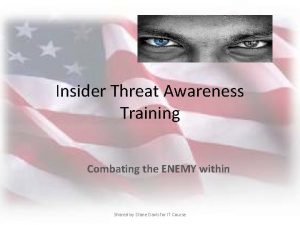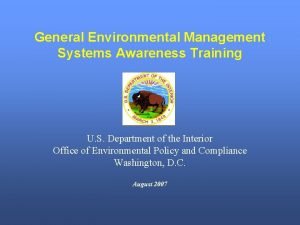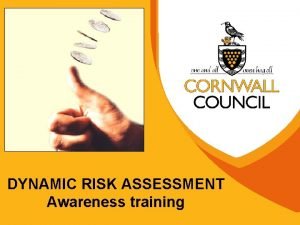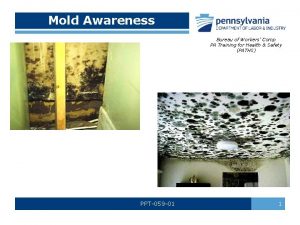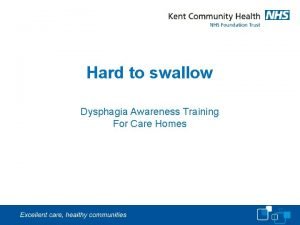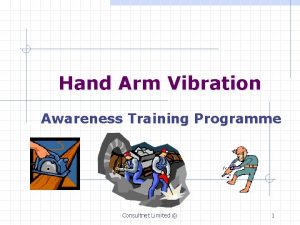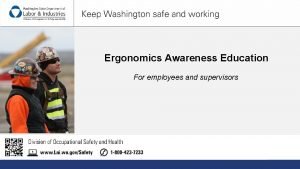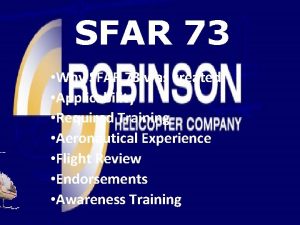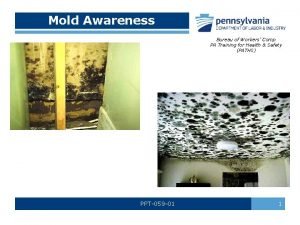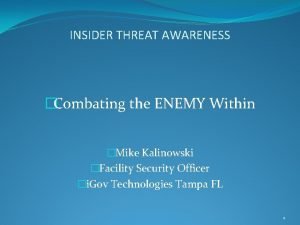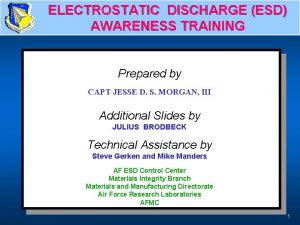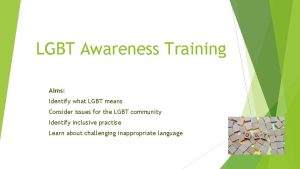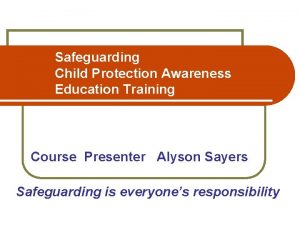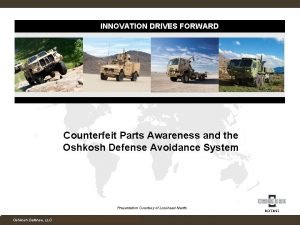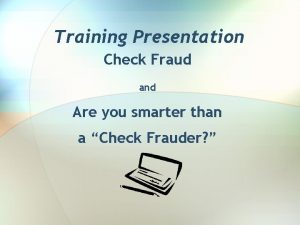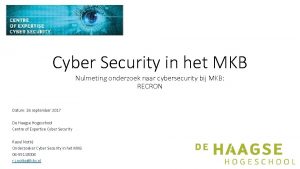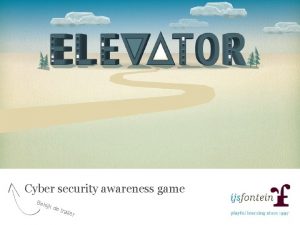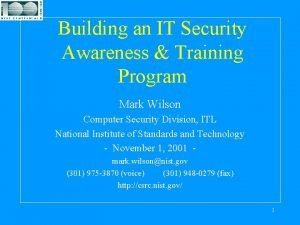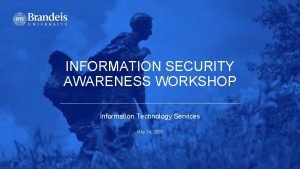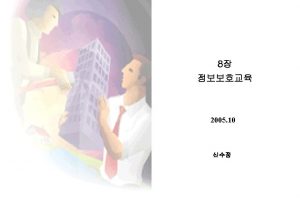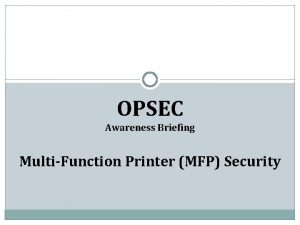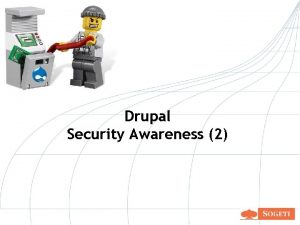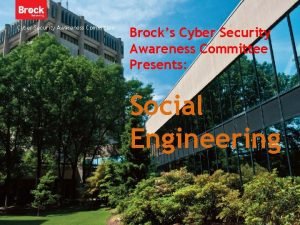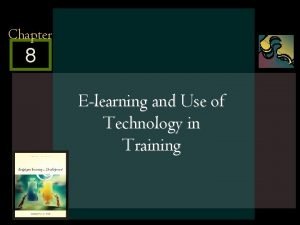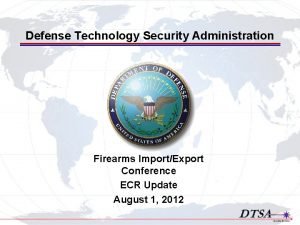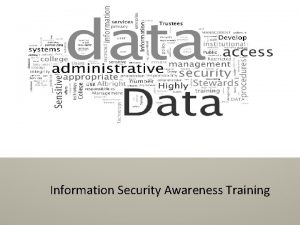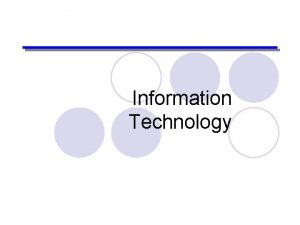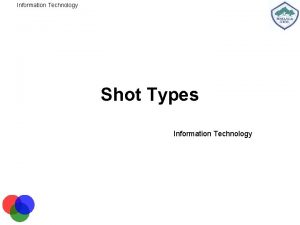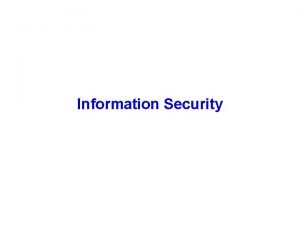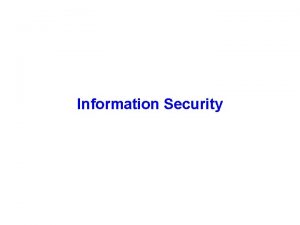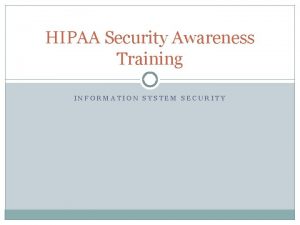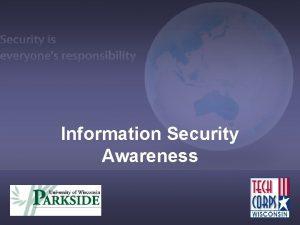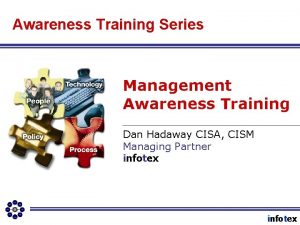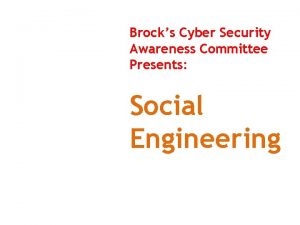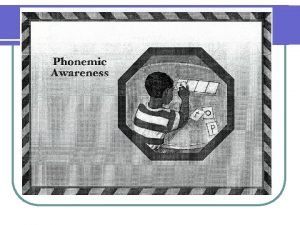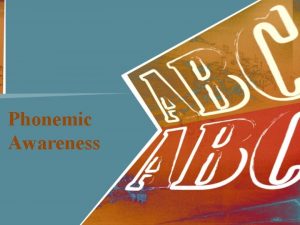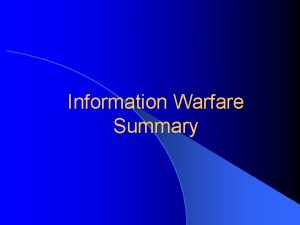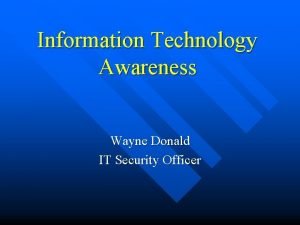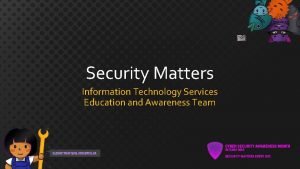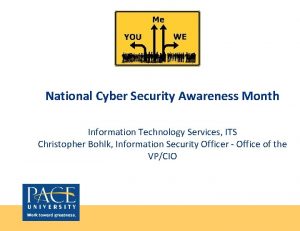DSHS Information Technology Security Awareness Training SECURITY AWARENESS


































































- Slides: 66

DSHS Information Technology Security Awareness Training SECURITY AWARENESS TRAINING FOR DSHS CONTRACTORS Click below to continue

Welcome to IT Security We are pleased to offer the DSHS Information Technology (IT) Security Awareness Training course. We know your time will be time well spent, and will benefit the department and our customers. All DSHS employees and contractors are required to take this course annually. To get credit for completing this course, you will need to notify your supervisor, human resources, or trainer once completed. There is no audio narration in the course. This course should take between 20 and 45 minutes to finish. Thank you.

Lesson 1: Introduction to Security Awareness Your security responsibilities start here. . . Any DSHS employee or contractor may have access to information that needs to be protected. We are each responsible for its safekeeping. This course shows why and how each of us can protect and preserve DSHS information and information systems on a daily basis as we work. For additional information, click the links provided at the left side of the pages of this course.

Why is security important to DSHS? Security Importance Various state and federal laws and regulations hold DSHS accountable for protecting information about its clients and employees. Violation of this trust can result in lawsuits and sanctions in the millions of dollars. Why is security important to you? You are responsible for safeguarding DSHS information and the computer systems entrusted to your care. Unauthorized disclosure of the department's information, or inappropriate use of the computer systems, may result in disciplinary action up to and including fines and/or cancelation of your contract.

Yes, there will be a quiz! Each lesson includes a series of questions. The questions are presented in Multiple-choice, True/False, or Yes/No format. Each question has one best answer. You can keep score of your selection for each question and count the number of correct selections you make, keep track on a separate sheet numbered 1 -12. Please answer the sample question on the next page.

Lesson 1: Introduction to Security Awareness Lesson 1 Quiz 1) Why is IT Security important to me? � IT Security is already built within the system. � IT Security is someone else’s job. � IT Security is not my problem. � IT Security is my daily obligation.

Lesson 1: Introduction to Security Awareness Lesson 1 Quiz 1) Why is IT Security important to me? � IT Security is already built within the system. � IT Security is someone else’s job. � IT Security is not my problem. � IT Security is my daily obligation. You are the initial point of entry for most viruses, malware, etc. so you must remain diligent.

Lesson 2: Bogus Messages �You may have seen bogus email messages (sometimes called “spam” or “phishing” messages) or bogus pop-up messages. They are designed to get you to click a link and/or provide information such as a password. Clicking could also infect your computer with a virus.

Common Questions �How can I tell if a message is bogus? �If I am not sure, who should I ask? �If it is bogus, who should I tell?

How Can I Tell? How can I tell if a message is bogus? It is not always easy to tell, but here are some simple tips. 1. Read carefully any message that asks you to click a link, or to enter a password. 2. Is it an email that appears to come from someone you know? Would he or she normally send you a message like this?

How can I tell…? (cont. ) 3. Pop-ups or windows: § How Can I Tell? § § § Do you routinely see messages like this one? If not, have your computer support staff told you to expect a message like this one? Were you on a non DSHS web site when the message appeared? Does the message contain grammatical errors?

Who Should I Ask? If I am not sure, who should I ask? �If in doubt, talk to your supervisor, help desk, or computer support staff.

Who Should I Tell? If I know a message is bogus, who should I tell? �To report bogus messages attach the original of any bogus email message to a new message, and send it to your computer support staff.

Conclusion Bogus Messages—Conclusion �Read messages carefully. �If in doubt, talk to your supervisor, help desk, or computer support staff.

Lesson 2: Bogus Messages Lesson 2 Quiz 2) What things should I look for to determine if an email message could be bogus? � If it asks me to click a link or enter a password, read it carefully. � Does it appear to come from someone I know, and would he or she normally send a message like this? � All of the above

Lesson 2: Bogus Messages Lesson 2 Quiz 2) What things should I look for to determine if an email message could be bogus? � If it asks me to click a link or enter a password, read it carefully. � Does it appear to come from someone I know, and would he or she normally send a message like this? � All of the above Make certain the email looks and reads as genuine. NEVER send your password or enter personal information at a link. DSHS will never ask for this information via email.

Lesson 2: Bogus Messages Lesson 2 Quiz 3) If I am not sure whether a message is bogus, I should talk to my supervisor, help desk, or computer support staff. � True � False

Lesson 2: Bogus Messages Lesson 2 Quiz 3) If I am not sure whether a message is bogus, I should talk to my supervisor, help desk, or computer support staff. � True � False If you have any question about an email then contact your local IT help person or your supervisor.

This lesson explains: Lesson 3: Protecting Information �How you can protect DSHS information. �Why protecting DSHS information is so important.

Why Protect Information? Virginia Doe 321 -12 -3456 (360) 555 -1234 1210 E 1 st St Aberdeen, WA Admin Policy 05. 01 Personal information about clients and employees must be protected because: � Our clients give us personal information to receive a service. They trust us to keep that information private--to not disclose that information except as needed to provide that service. � Various state and federal laws require us to keep information private. � State law requires us to notify persons whose personal information we have inappropriately disclosed.

Classes of Information Not all DSHS information requires the same level of protection. Managers are required to make sure that information entrusted to their care is classified according to the following four broad categories, and protected accordingly. "Public Information" can be released to the public. "Sensitive Information" is not specifically protected by law, but should be limited to official use only.

Classes of Information, continued "Confidential Information" is specifically protected by law. It generally includes personal information about individual clients and employees. "Confidential Information Requiring Special Handling" has especially strict handling requirements. Some examples of "Confidential Information Requiring Special Handling" include: - Protected Health Information (PHI), as defined by HIPAA rules. - Information that identifies a person as a client of an alcohol or substance abuse treatment, or mental health program.

So, how can I protect the Department’s Information? Protecting Information � Store information in a safe place. � Normally, you should save any files in your “home” directory (folder) or a shared directory (folder) on a server— NOT on your Local Disk (C: ) � If you need to store confidential information anywhere else e. g. on your Local Disk (C: ), flash memory device (“thumb drive”), or CD, you must: Have documented management approval; and Get instructions on how to protect the information (contact your computer support staff).

Protecting Information (cont. ) � Do not directly connect any employee owned device or recordable media to a computer or network. This includes: Smart phones. Flash memory devices (“thumb drives”). Writable CDs or DVDs.

Protecting Information (cont. ) Protecting Information � Do store paper documents containing confidential information in locked containers (e. g. file cabinets) after normal working hours. � Do lock your computer screen whenever you leave it. � Do not share confidential information with coworkers who do not need it to do their jobs.

Protecting Information (cont. ) Protecting Information �If you are authorized to send confidential information through e-mail messages over the Internet (i. e. outside the state/intergovernmental network) you must use a secure messaging process such as the DSHS Secure E -Mail Message system.

Protecting Information (cont. ) Protecting Information � Do immediately report loss, theft, or unauthorized disclosure of data in any form (e. g. paper or electronic) that potentially includes DSHS confidential information, to the ISSD Service Desk at 1 -888 -329 -4773, 360 -902 -7700, or email ISSDservicedesk@dshs. wa. gov – this includes data lost by contractors.

Sharing Information with Business Partners When DSHS shares confidential information with other entities (e. g. private contractors or other government agencies), there must be a formal contract that meets specific requirements. For details on sharing DSHS information, please contact your contracts staff.

Some DSHS information is protected by law. Federal Information Some DSHS information is protected under state and/or federal law. Social Security Administration (SSA) data is one such example. SSA client data is confidential. It’s protected by RCW 74. 060 at the Washington State level and by the federal Privacy Act of 1974.

Federal Information, Continued Protected SSA data is defined as all personal client information obtained from or verified by the Social Security Administration. SSA client data may be provided directly to the client or their representative. SSA data may only be disclosed to agencies or other individuals for purposes related to program administration after an individual data share for that individual or agency has been established with the SSA. When in doubt about whether or not you’re allowed to disclose, ask your supervisor!

Federal Information, Continued Employees are held personally accountable for the appropriate use of SSA client data. It must be handled and stored securely, never “left out” for others to see, and destroyed in a secure manner when no longer needed. Unauthorized inspection, use, or disclosure of SSA client data can result in termination, prison time, and/or a fine of up to $5, 000. If you suspect that SSA client data has been lost or breached you must report it to your supervisor immediately. (SSA requires that you report the incident within one hour. ) The following slide explains how to report.

Federal Information, Continued Any loss or breach of SSA client data must be reported to the United States Computer Emergency Readiness Team (US-CERT). A report must be filed within one hour. In addition to filing a US-CERT report, any loss or breach of SSA client data must also be reported to the DSHS Privacy Officer. If you are unable to contact the DSHS Privacy Officer within one hour, call SSA’s National Network Service Center (NNSC) toll free at: 877 -697 -4889 (Select “Security and PII Reporting”)

Lesson 3: Protecting Information Lesson 3 Quiz 4) Which classification of data requires the greatest protection? Public Information Sensitive Information Confidential Information Requiring Special Handling

Lesson 3: Protecting Information Lesson 3 Quiz 4) Which classification of data requires the greatest protection? Public Information Sensitive Information Confidential Information Requiring Special Handling This information includes personally identifiable health information, PHI, which is covered under HIPAA.

Lesson 3: Protecting Information Lesson 3 Quiz 5) Before I save any files containing confidential information on my Local Disk (C: ), a flash memory device (“thumb drive”), or CD, I must: Have documented management approval Have received instructions on how to protect the information Both of the above

Lesson 3: Protecting Information Lesson 3 Quiz 5) Before I save any files containing confidential information on my Local Disk (C: ), a flash memory device (“thumb drive”), or CD, I must: Have documented management approval Have received instructions on how to protect the information Both of the above In addition to management approval the information must also be encrypted.

Lesson 3: Protecting Information Lesson 3 Quiz 6) I may save the following kinds of information on my home computer: � Confidential client information Notes on a DSHS business meeting No DSHS information

Lesson 3: Protecting Information Lesson 3 Quiz 6) I may save the following kinds of information on my home computer: � Confidential client information Notes on a DSHS business meeting No DSHS information Never save any DSHS or client information to your home computer, even if it’s just temporary.

Lesson 3: Protecting Information Lesson 3 Quiz 7) I may plug or insert the following items, which I personally own, into my DSHS computer: � A flash memory Device (“thumb drive”) � A smart phone � A writable CD or DVD � None of the above

Lesson 3: Protecting Information Lesson 3 Quiz 7) I may plug or insert the following items, which I personally own, into my DSHS computer: � A flash memory Device (“thumb drive”) � A smart phone � A writable CD or DVD � None of the above Personal devices, usb items such as lights or a cup warmer, or anything not specifically provided by your local IT may not be plugged into your DSHS computer. Not even to charge your cell phone or other devices.

Lesson 3: Protecting Information Lesson 3 Quiz 8) When I leave my computer, I don’t need to lock the screen because it locks automatically after 20 minutes: � True � False

Lesson 3: Protecting Information Lesson 3 Quiz 8) When I leave my computer, I don’t need to lock the screen because it locks automatically after 20 minutes: � True � False The 20 minute lock is only a backup in case you forget to manually lock when stepping away.

Lesson 3: Protecting Information Lesson 3 Quiz 9) I can send confidential DSHS information in an e-mail to a contracted service provider, using my Outlook email account, because Outlook automatically encrypts messages. � True � False

Lesson 3: Protecting Information Lesson 3 Quiz 9) I can send confidential DSHS information in an e-mail to a contracted service provider, using my Outlook email account, because Outlook automatically encrypts messages. � True � False A secure email system must be used as Outlook does not encrypt messages automatically.

In this lesson you will learn about: Lesson 4: Passwords �Keeping passwords secret. �Constructing passwords that are hard to guess.

How to Protect Your Passwords You are responsible for constructing safe passwords and protecting them from unauthorized disclosure. Passwords for DSHS systems must be kept SECRET. Sharing a password with anyone else is PROHIBITED, except for emergency access.

� Do resist attempts by How to Protect Your Passwords, continued… unauthorized persons to get you to reveal your password e. g. by phone or email. � Do change your password immediately following discovery that it has been compromised or otherwise shared. � Do not store a password on your computer for automatic entry.

How to Protect Your Passwords, continued. . . � Do not write your password down and leave it in a place where unauthorized persons might discover it, such as under your keyboard. � Do not store a password in the same case as a portable computer.

Constructing Good Passwords Create a password that is easy for you to remember, but hard for anyone else to guess. � Hackers use computer programs and dictionaries to guess passwords. Try creating acronyms or phrases, and varying the spelling of words e. g. “M@th 4 fun”. � Don't include your user ID or any part of your full name. � Don't use names of family members.

Your passwords must: Constructing Good Passwords, continued. . . �Be a minimum of eight characters in length �Contain at least one special character Like a %, &, or + character �Contain at least two of the following kinds of characters: Upper case letters Lower case letters Numbers

Protect your Passwords. . . Summary Password Summary Remember, your passwords are the keys to your computer, Keep passwords secret. network, and information that you do not want to let Create passwords that are easy unauthorized persons access. for you to remember, but hard for others to guess. So, Always Protect your Passwords

Lesson 4: Passwords Lesson 4 Quiz 10) The following is good password practice: Don’t share it with other people. Change it immediately if someone else has learned it. Don’t put it where anyone else might find it. All of the above

Lesson 4: Passwords Lesson 4 Quiz 10) The following is good password practice: Don’t share it with other people. Change it immediately if someone else has learned it. Don’t put it where anyone else might find it. All of the above If your supervisor needs to have your password then you should supply it in a sealed envelope. Once opened and used by your supervisor you are to immediately change your password and provide them with a new sealed envelope containing your password.

Lesson 4: Passwords Lesson 4 Quiz 11) When you make up a password, you should: Make it easy for you to remember, but hard for others to guess. Don’t include your user name. Include some numbers or special characters. All of the above

Lesson 4: Passwords Lesson 4 Quiz 11) When you make up a password, you should: Make it easy for you to remember, but hard for others to guess. Don’t include your user name. Include some numbers or special characters. All of the above An example using the standard unsecure password of Password would be to alter it to make it harder to figure out so it could become: ^p@55 w 0 Rd.

Lesson 5: Using and Protecting Computer Systems In this Lesson you will learn about: �Appropriate use of computer systems. �Remote Access. �Physical Protection.

� You may only use agency computer Appropriate Use of Computer Systems systems, such as e-mail and Internet access, for appropriate purposes. � Personal use is strictly limited. � You may not access external e-mail systems such as Gmail, MSN-Hotmail, etc. from agency computers.

�What is Remote Access? Remote Access "Remote Access" means accessing systems when away from the office. For example by using Outlook Web Access (OWA) or the Citrix Virtual Workplace service. o � Is Approval Required? o Employees must have management approval to use remote access.

Protecting Computers Physical Protection: Physically protect portable computing devices, including laptops, tablets, and handheld devices, by: � Keeping them in locked storage when not in use; � Keeping them under your control when traveling; � Do not leave a device in a vehicle parked outside overnight. Reporting lost items: Immediately report lost, misplaced, or stolen portable computing devices to the ISSD Service Desk at 1 -888 -329 -4773 , 360 -902 -7700, or e-mail ISSDService. Desk@dshs. wa. gov.

Lesson 5 Quiz Lesson 5: Using and Protecting Computer Systems 12) I should protect portable computing devices (including laptops and handheld devices) by: Not leaving them in a vehicle parked outside overnight. Keeping them in locked storage when not in use. Keeping them under my control when traveling. All of the above

Lesson 5 Quiz Lesson 5: Using and Protecting Computer Systems 12) I should protect portable computing devices (including laptops and handheld devices) by: Not leaving them in a vehicle parked outside overnight. Keeping them in locked storage when not in use. Keeping them under my control when traveling. All of the above Portable devices should always be in your possession while traveling.

Lesson 6: Course Review & Wrap up Welcome to the final lesson of this course, which will include: �A quick review; �Getting credit; and �Your comments on the course.

Recap of Lessons 1, 2 and 3 In Lesson 1: Introduction, you learned: • Why protecting DSHS information and computer systems is important to you. In Lesson 2: Bogus Messages, you learned: • How to spot bogus email and pop-up messages. In Lesson 3: Data Classification and Protection, you learned: • How to protect confidential information.

Recap of Lessons 4 and 5 In Lesson 4: Passwords, you learned about: • Keeping passwords secret. • Constructing passwords that are hard to guess. In Lesson 5: Using and Protecting Computer Systems, you learned about: • Appropriate use of computer systems. • Remote Access. • Physical Protection.

Once you exit the course: Getting Credit � You should notify your supervisor, human resources person, or training person, whichever is appropriate for your office, that you have completed the course. � A record of your annual course completion will be placed in your employee personnel record.

Thank You! ALTSA DDA IT Security Team Comments: This course will be updated periodically. Please E-mail any comments or suggestions to DSHS IT Security.
 Cvs privacy awareness training answers
Cvs privacy awareness training answers Teleniom
Teleniom Dshs bccu
Dshs bccu Dshs interpreter ethics quiz
Dshs interpreter ethics quiz Uncompensated trauma care application texas
Uncompensated trauma care application texas Working connections child care
Working connections child care Dshs
Dshs Dshs secure email
Dshs secure email Thcic inpatient data
Thcic inpatient data Sabine mustermann
Sabine mustermann Ncic hosts restricted files and non-restricted files
Ncic hosts restricted files and non-restricted files Seta program 5 steps
Seta program 5 steps Chemical security awareness training
Chemical security awareness training Webroot cyber security training
Webroot cyber security training Suspicious mail training
Suspicious mail training Hipaa privacy and security awareness training
Hipaa privacy and security awareness training Uc cyber security awareness training answers
Uc cyber security awareness training answers Cda security awareness training
Cda security awareness training Annual security awareness refresher
Annual security awareness refresher Private securty
Private securty Visa international security model
Visa international security model What is nstissc security model
What is nstissc security model Iso 9001:2015 awareness training ppt
Iso 9001:2015 awareness training ppt Sexual abuse quiz
Sexual abuse quiz Ppe awareness training
Ppe awareness training Ppe awareness training
Ppe awareness training Iatf 16949 awareness training
Iatf 16949 awareness training Iso 9001 presentation
Iso 9001 presentation Iso 14001 2015 awareness training
Iso 14001 2015 awareness training Reportable behavioral indicators
Reportable behavioral indicators Environmental management system awareness training
Environmental management system awareness training Risk management awareness training
Risk management awareness training Mold awareness training
Mold awareness training Dysphagia symptoms
Dysphagia symptoms Hand arm vibration awareness training
Hand arm vibration awareness training Ergonomics awareness training for supervisors
Ergonomics awareness training for supervisors Ergonomics awareness training for supervisors
Ergonomics awareness training for supervisors Sfar 73 explained
Sfar 73 explained Ppt-059
Ppt-059 Insider threat awareness
Insider threat awareness Esd marking
Esd marking Lgbt awareness training
Lgbt awareness training Find ergonomics awareness training
Find ergonomics awareness training Rf safety awareness training answers
Rf safety awareness training answers Bloodborne pathogens awareness training
Bloodborne pathogens awareness training Phonological awareness training program
Phonological awareness training program Child protection awareness training
Child protection awareness training Counterfeit material awareness training
Counterfeit material awareness training Ehs awareness training
Ehs awareness training 221481181
221481181 The safest ladder to use around electricity is
The safest ladder to use around electricity is Cultural awareness training presentation
Cultural awareness training presentation Asbestos awareness training wa
Asbestos awareness training wa Cyber awareness meting
Cyber awareness meting Cyber security awareness game
Cyber security awareness game Security awareness screensavers
Security awareness screensavers Workshop security awareness
Workshop security awareness Security awareness program
Security awareness program Stanford university cio
Stanford university cio Opsec awareness
Opsec awareness Cyber awareness voorbeeld
Cyber awareness voorbeeld Security awareness ciampa
Security awareness ciampa Quid pro quo cyber security
Quid pro quo cyber security Use of technology in training
Use of technology in training Elisa.dtsa.mil
Elisa.dtsa.mil Positive impacts of information technology
Positive impacts of information technology Positive impacts of information technology
Positive impacts of information technology

